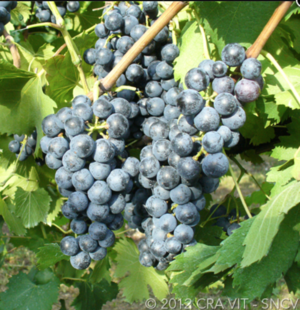 DELIVERY FROM £4.95
DELIVERY FROM £4.95 FREE DELIVERY FOR ORDERS OVER £100
FREE DELIVERY FOR ORDERS OVER £100Home » Community » Wine and Grape Guide » Tazzelenghe

Tazzelenghe is a rare and powerful Friuli-Venezia Giulia native red grape variety, specifically the Colli Orientali del Friuli area near the towns of Buttrio and Cividale del Friuli. Deeply rooted in the region’s winemaking tradition, its name is derived from the Friulian dialect and translates to “tongue cutter” (taglialingue), a vivid reference to the wine’s intense tannic structure and sharp acidity, which together produce a bold, cutting sensation on the palate.
Long overshadowed by more commercial varieties, Tazzelenghe has recently enjoyed a modest revival, thanks to a growing interest in indigenous grapes and authentic expressions of terroir. Genetic studies have shown a close relationship between Tazzelenghe and Refosco Nostrano, another native variety of the region.
From a viticultural standpoint, Tazzelenghe is a vigorous and late-ripening vine, capable of producing abundant and regular yields under the right conditions. It grows best in the well-drained, marl and sandstone soils typical of the Friulian hills, where it benefits from excellent exposure and a favorable microclimate.
The berries are medium to large, round and slightly flattened, with a waxy blue-black skin that contributes to the wine’s deep pigmentation. The bunch is medium in size, cylindrical and sometimes winged, while the vine’s leaves are medium, pentagonal, and typically three-lobed.
Wines made from Tazzelenghe are intensely ruby red and notable for their bold character, marked by pronounced tannins, vibrant acidity, and a savory, earthy depth. While these qualities can make the wine austere in its youth, aging transforms Tazzelenghe into a wine of great elegance and complexity. With time, the tannins soften, the acidity integrates, and the wine develops layers of spice, dark fruit, and forest floor notes.
Often vinified as a monovarietal wine, Tazzelenghe can also be blended with other native grapes such as Refosco or Schioppettino to temper its aggressiveness and round out the palate. It pairs exceptionally well with robust cuisine—think aged cheeses, game meats, and traditional Friulian dishes.



Before we say ciao, why not join our newsletter & stay up to date on everything happening on planet Italyabroad.com